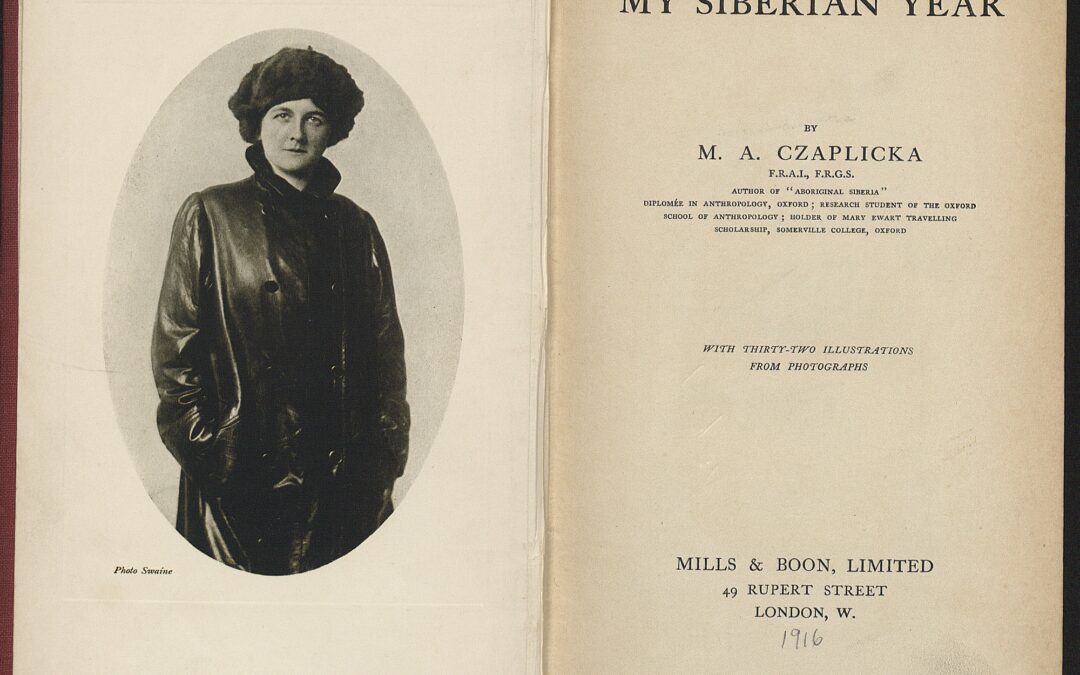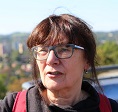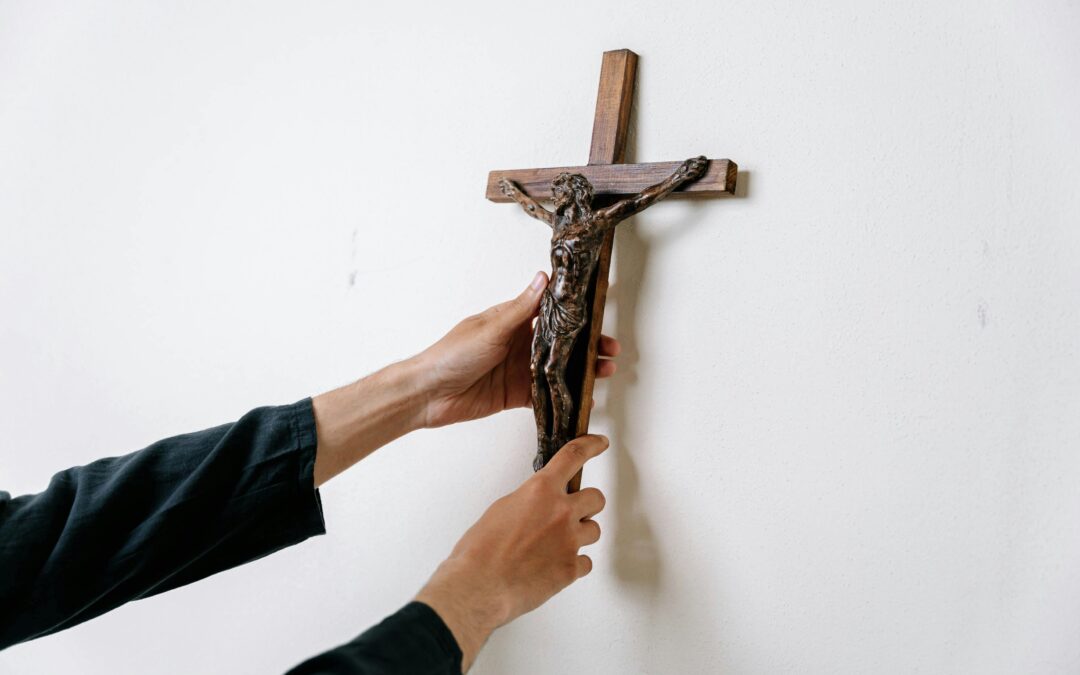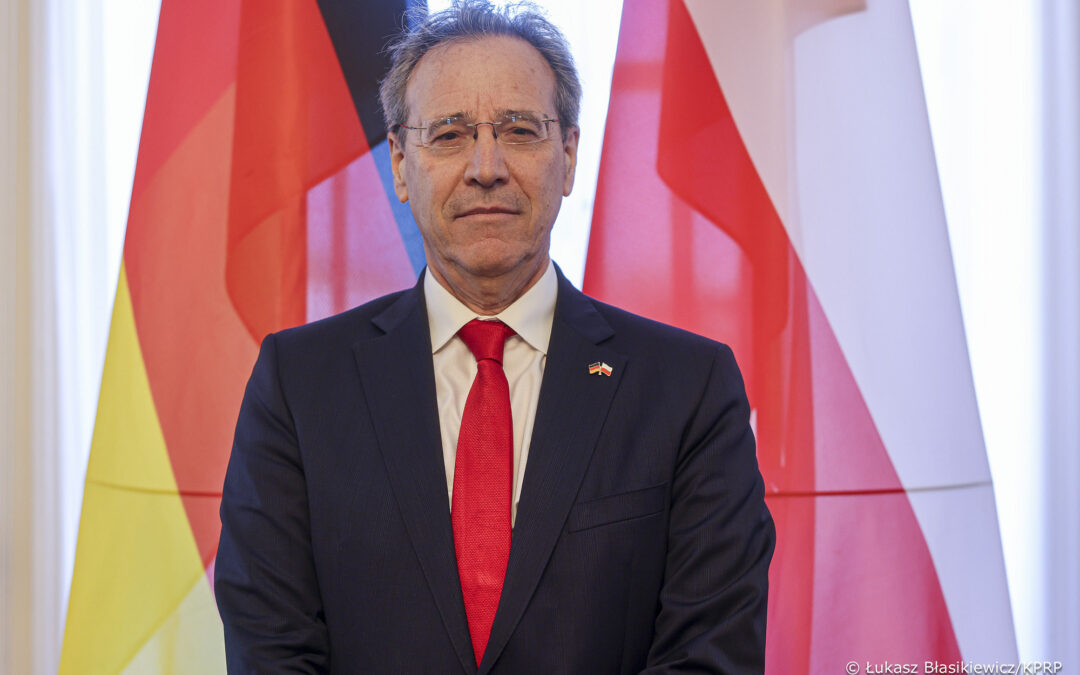By Grażyna Kubica
One hundred years ago, on 27 May 1921, the 37-year-old Polish anthropologist Maria Czaplicka died in her room in Bristol after ingesting a strong poison. Her funeral at the Wolvercote cemetery in Oxford attracted crowds of her English and Polish friends, professors and students.
Czaplicka was a remarkable woman: an intrepid traveller to the Arctic and the organiser of the predominantly female Yenisei Expedition. She also wrote many academic works on Siberia and was the first female lecturer of anthropology at the University of Oxford. She owed her success to her skills as well as strength of will and diligence, but she paid the price with excessive work, incessant financial problems and lack of security.
Czaplicka defied the odds despite her roots in a subjugated country that had been partitioned among its neighbours. Born and raised in Warsaw in the Russian part, she faced an almost impossible task achieving her ambition to work as an academic. Going abroad was the only option for women, but presented the challenge of being foreign as well as female. Even Czaplicka’s namesake, Maria Skłodowska Curie, was no exception.
Early years
Maria Antonina Czaplicka was born in 1884 into a relatively impoverished noble family that set great store by the education of their daughters as well as their sons. While at school in Warsaw, she participated in a clandestine self-learning club for those interested in issues which were banned by the official education system, such as Polish history and literature. She later led a so-called komplet, a clandestine teaching group for working-class children.
Czaplicka further developed her academic interests by attending secret classes of the “Flying University” for women. She completed her exams in the local boys’ school, which presented her with access to university abroad.
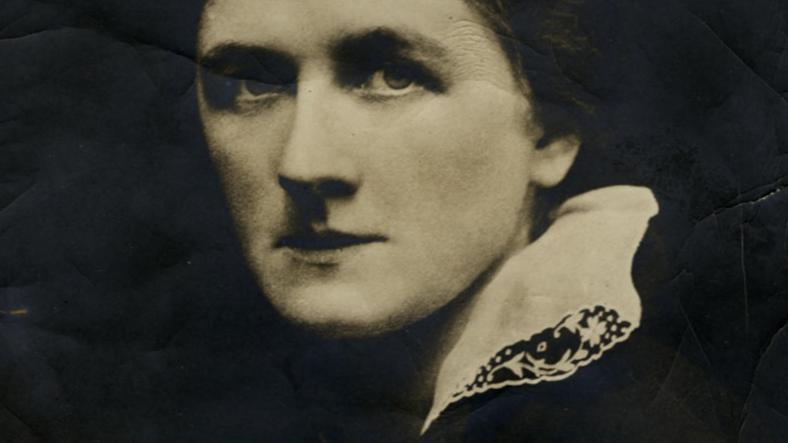
Maria Czaplicka, 1915 (Pitt Rivers Museum, University of Oxford, under CC BY-NC-ND 4.0)
Her mentor at this time was Wacław Nałkowski, an advocate of socialism and the emancipation of women, opponent of antisemitism, a remarkable and unconventional figure engaged in the education of the “people”. She also befriended his daughter, later an eminent writer, Zofia Nałkowska. While convalescing in Zakopane, Czaplicka became friendly with members of the socialist intelligentsia, including the writer Władysław Orkan and Jan Rembowski, a painter who had started out as a worker in a factory (who depicted Czaplicka as an angel in one of his works).
Academic success in England
In 1910, she became the first female beneficiary of a Polish organisation funding education abroad. As well as working hard on her English, she studied ethnology and sociology at the London School of Economics and Political Science, which was motivated by socialist, Fabian and democratic ideals, and where almost half of the students were women. Several months earlier, her acquaintance and compatriot, the later influential anthropologist Bronisław Malinowski, had arrived there.
The following academic year she moved to Oxford, where she joined Somerville women’s college, which was religiously independent, supported the suffragist movement, boasted achievements in science, and also had “enthusiasm for travel and academic exploration”.
Her mentor at Oxford was R. R. Marett, a major figure in British anthropology. This was the generation whose members still remained in their armchairs, but already had a clear awareness of the importance of field research conducted by anthropologists themselves and were preparing their successors for this role.

Maria Czaplicka during the Yenisei Expedition to Siberia, 1914-15 (Pitt Rivers Museum, University of Oxford, under CC BY-NC-ND 4.0)
It was he who commissioned Aboriginal Siberia, Czaplicka’s book reporting on the state of knowledge of the peoples of Siberia based on Russian and Polish research unavailable to British anthropologists.
Arctic hysteria, shamans and darkness
In the book, published in 1914, she deconstructed the concept of “arctic hysteria” and showed that it was a term invented by European travellers and applied to identify the various pathological symptoms in the European sense of the word.
She also presented the issue of shamans’ “change of sex”. She proposed a sociological interpretation: it was the society that gave the shamans (both male and female) special rights, thanks to which they occupied an exceptional position. Shamans can do what others must not. They have to behave differently from others because they possess supernatural power, given to them by society. Shamans were according to her not a third sex, but a third category of people.
She also showed that it was the darkness surrounding the inhabitants of the tundra as well as the fact that they spent most of the year in shelters that led to their introspective thinking, revelations and foretelling. The inhabitants of the taiga, on the other hand, worshipped the sky and celestial bodies, and their imagination was more developed.
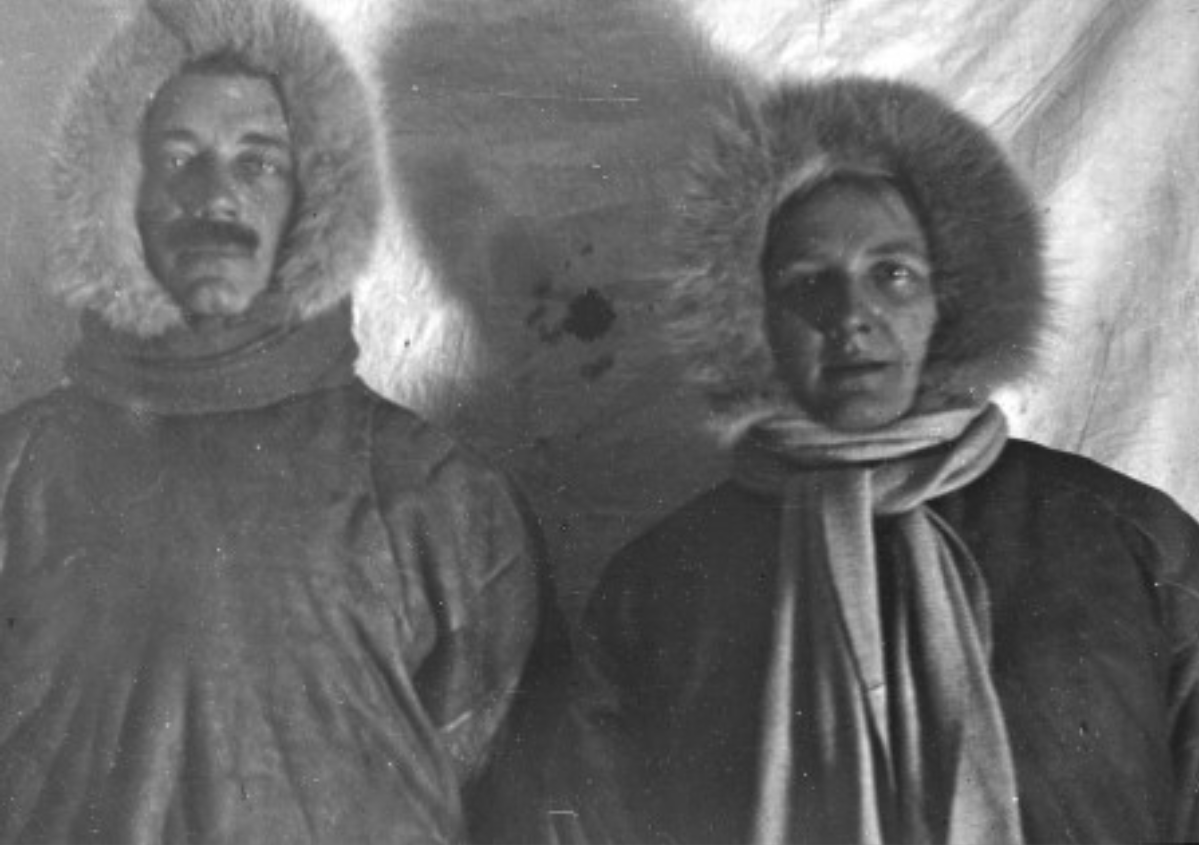
Henry Usher Hall and Maria Czaplicka during the Yenisei Expedition to Siberia, 1914-15 (Pitt Rivers Museum, University of Oxford, under CC BY-NC-ND 4.0)
Czaplicka decided to discover this land in person. She began planning an expedition to examine the social and physical anthropology of the Tungus (i.e. Evenki) and to gather an ethnographic collection for the Pitt Rivers Museum in Oxford.
A year in Siberia
Czaplicka set off on her great journey from London 21 May 1914. Her first stop was Warsaw. As she departed, she puzzled over the “unspoken questions”: “did ever a Polish woman go so willingly to Siberia before?” For Poles this was a place that had dreadful connotations as the destination of the thousands of political prisoners sent there after unsuccessful uprisings.
She stopped off in Saint Petersburg to consult influential figures, noting that, when travelling around the Russian Empire, one could never have too many certificates and reference letters. As it turned out, the telegrams from the ministry proved indispensable in Siberia. In Moscow, she met up with other members of the expedition. The group travelled for five days by the Trans-Siberian Railway to Krasnoyarsk, before boarding a steamer which left for its first voyage of the season on the Yenisei.
The voyage lasted three weeks. They reached the mouth of the river and the settlement of Golchikha on an overcast day, with a great deal of snow still lying on the surrounding hills. Nearby stretched a native camp which was populated in summer by fishermen – Nganasans, Nenets and Dolgans.
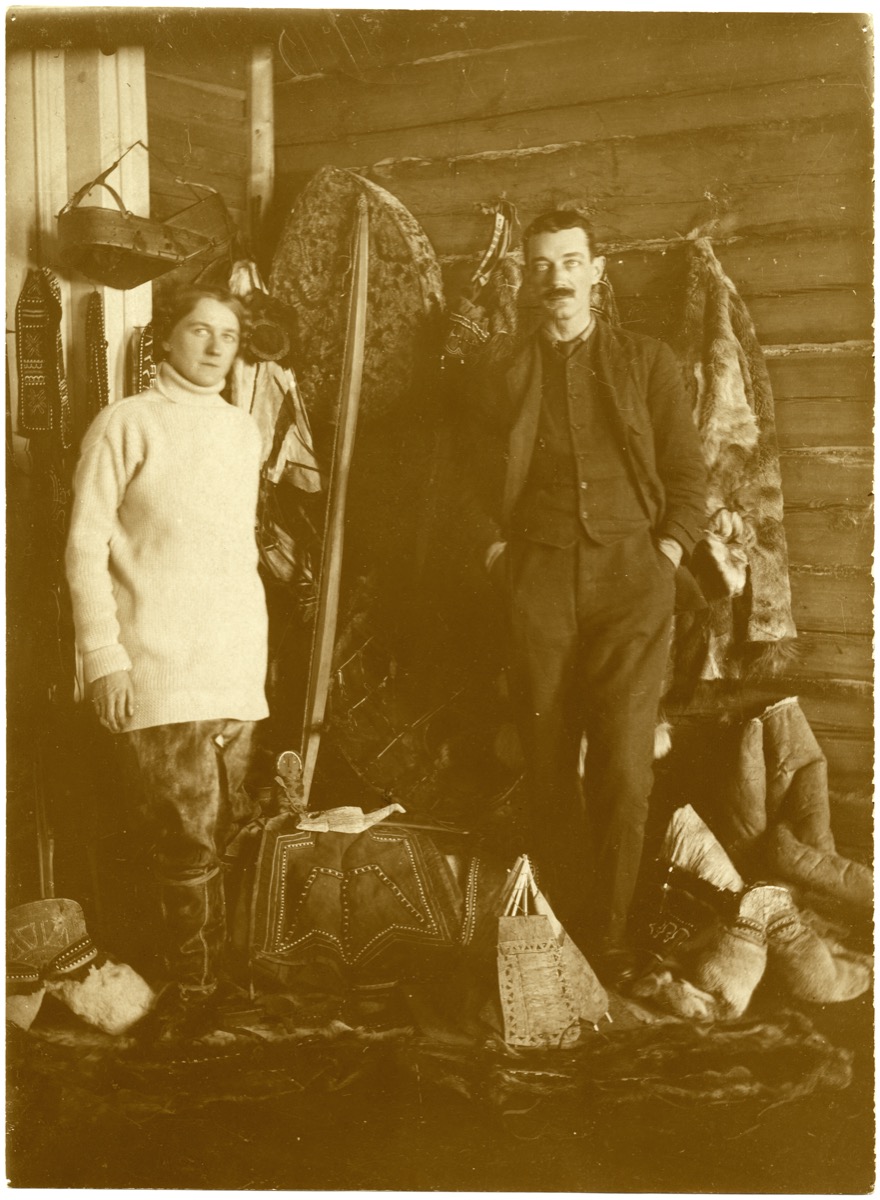
Maria Czaplicka and Henry Usher Hall with objects collected on the Yenisei Expedition to Siberia (Pitt Rivers Museum, University of Oxford, under CC BY-NC-ND 4.0)
The whole summer for the “anglijska spedicija” (“the English expedition”, as they were called by locals in broken Russian) was taken up by intensive work. During a trip along the Yenisei to a settlement 25 miles away they almost sank in a storm, and Czaplicka had a terrible attack of seasickness, vomiting blood as the boat remained almost stationary for five hours despite the crew rowing intensively and bailing out the icy water.
She spent the summer accumulating information on the social anthropology of the Nganasans and Nenets, collecting legends and a lexicon of their languages. She conducted anthropometric measurements and collected items for the museum, and also met one male and one female shaman. Czaplicka became a rival for the latter, as patients came to her daily to raid the contents of her first-aid kit.
At the end of the summer, news reached the group about the outbreak of the First World War. In September, Czaplicka wrote that she was trying not to think about what was happening in Poland. The anthropologists sailed south to Turukhansk. On the way they witnessed a shaman ceremony conducted by Bokkobushka, an Enet, who foretold that many things would await her upon her return home, and that her three houses would become one. This was interpreted as a reference to prospects for a newly independent Polish state.
As winter set in and the party continued the journey on sleighs, newly armed with layers of fur clothing, the temperature often sank to minus 60 degrees Celsius. They ate what the locals ate, reindeer meat, and were sometimes so hungry that they did not even wait for it to cook. Later on they headed east as far as Lake Yessei, which is located in Evenki territory but is mostly inhabited by Yakuts, and then set off back to the Yenisei.
In late spring, Czaplicka finally boarded the steamer for her homeward journey, seeing the first Austrian and German prisoners of war on the way. Czaplicka visited her family in Warsaw, arriving just in time for the evacuation of the city before the German invasion.
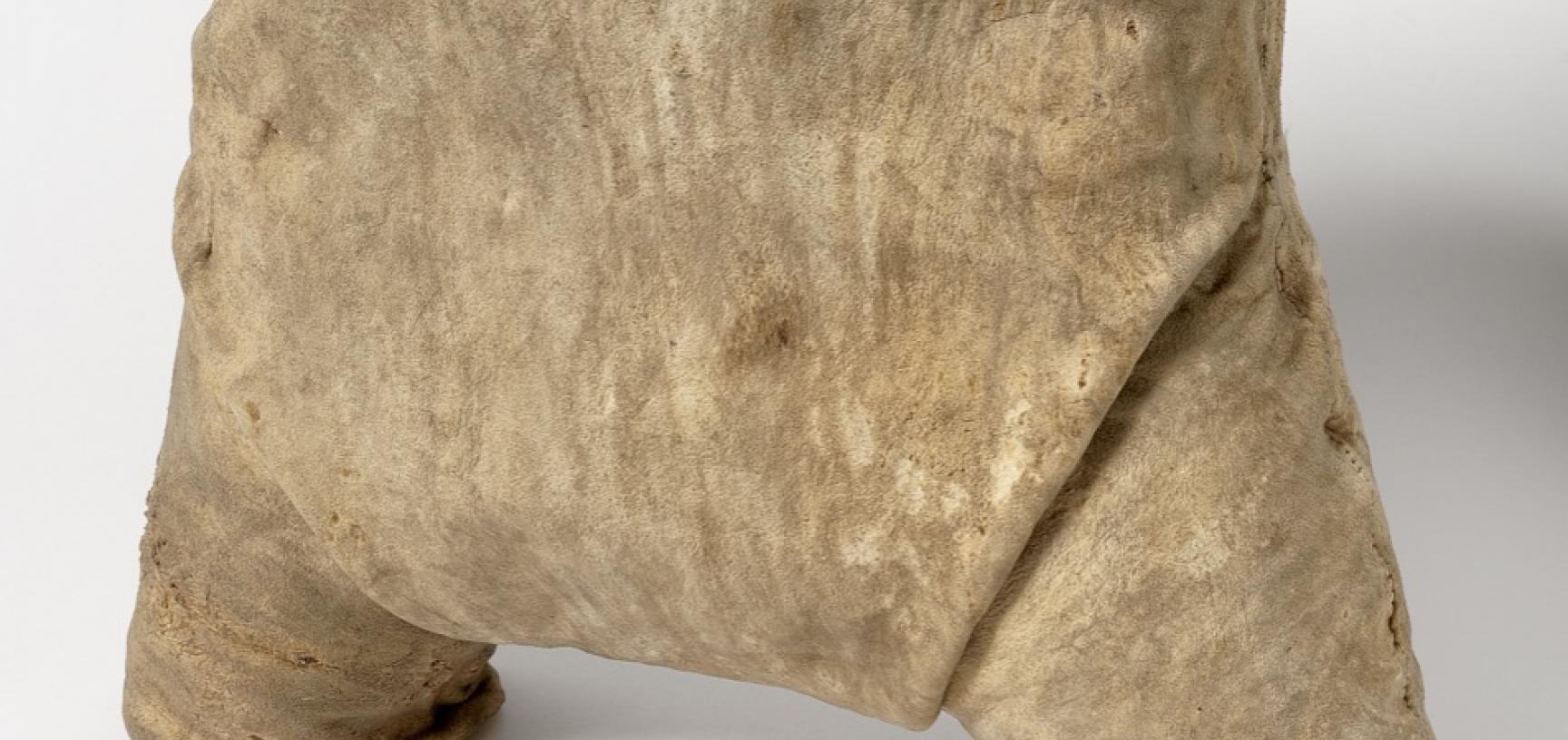
A pair of “reindeer nickers” worn by Evenki women in Siberia, collected by Maria Czaplicka in 1914 (Pitt Rivers Museum, University of Oxford, under CC BY-NC-ND 4.0)
Later, she had problems with getting away, as the Russians had burnt down the train stations. She was only able to travel to England by land through Scandinavia, because the Germans were mounting a military offensive and the Baltic was closed to boats.
Success and struggles in academia
Czaplicka arrived in London in September 1915. News about her expedition and successful return appeared in several newspapers. She took her collection to the Pitt Rivers Museum and gave a series of lectures illustrated with slides in various places, as well as beginning work on a travel book, My Siberian Year.
In scientific articles from the expedition, Czaplicka emphasised the role of the natural environment in shaping the culture of the indigenous peoples. She also took an increased interest in her native country, advocating the idea of Poland’s independence, which was not popular among the British public then. She wrote several articles for the Russian supplement of The Times, and was accepted into the Royal Geographical Society.
In summer 1916 she moved to Oxford to take up a job as a lecturer, replacing a man who had been called up to the army. Alfred Haddon from Cambridge wrote: “Miss Czaplicka’s research and interests are so broad and diverse that she is outstandingly suited to this very responsible teaching position at the university.”
The Somerville buildings had been turned into a hospital, so Czaplicka joined another women’s college, Lady Margaret Hall. The college became her true home. She taught at the university until 1919, when she had to leave her post since the lecturer whose place she had taken had returned from the war.
Czaplicka then became involved in combating the hostile propaganda against Poland dominant in the British press, as well as in actively advocating for women’s suffrage. She looked for work in free Poland, but although women now had the vote, for a long time they did not have access to university chairs. The only female Polish lecturer at this time was Skłodowska Curie.
Czaplicka also visited the United States for a lecture tour and to look for work at Barnard College in New York City, as an assistant to the leading anthropologist Franz Boas, but to no avail. Upon her return to England, she moved to Bristol to take up a new position opened for her at the university as an anthropology lecturer. This was at the time a relatively new and progressive, albeit provincial, university which from the outset accepted women both as students and as lecturers.
She continued to receive scholarly recognition, such as the Murchison Award of the Royal Geographical Society for “her ethnographical and geographical research in northern Siberia”.
A daughter of her time
The trajectory Maria Czaplicka’s life was influenced by various factors. One of them was the political situation of the subjugated Polish nation without a state, and the situation of the intelligentsia: impoverished nobility that had to make their living by undertaking professional occupations (women included).
Her gender never made her life easier. She wanted to become a professional anthropologist in the UK, but the discipline was not fully open for women. Czaplicka was not a rich spinster who was able to indulge in her scientific interests and intrepid journeys. She was an impoverished Polish intellectual who needed to earn a living. The position in Bristol might have been a new chapter in her career, but she was already too tired with the instability of her life.
The day before her suicide in 1921, a University of London research fellowship which would have allowed her pay off her debts was awarded to somebody else, despite previous assurances that it would wait for her while she settled the formalities of becoming a naturalised British subject.
Czaplicka demonstrated her awareness of the political and cultural changes going on at the time in her advocacy for Poland’s national cause as well as her academic work. Her image of Siberia contrasted with authors of contemporary ethnographic monographs, who used to describe “primitive tribes” in the state of “savagery” without taking into account the mutual influences of white people on their cultures and these cultures on the Russian settlers.
Maria Czaplicka was a daughter of her time. What made her special was her women’s activism and socialistic engagement, literary and ethnographic talent, unusual persistence in following her goals and eagerness to stress her place in the world. One has to regret that she succumbed in her battle so early.
Main image from My Siberian Year by M. A. Czaplicka, author photo by Krzysztof Heller
